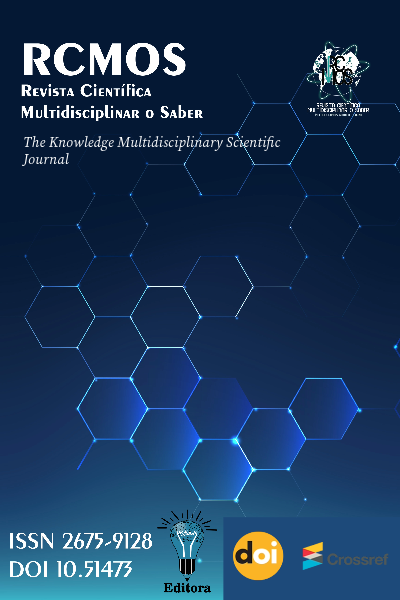Image and visibility of the athlete: media and brand building
Image and visibility of the athlete: media and brand building
DOI:
https://doi.org/10.51473/rcmos.v1i1.2023.1608Keywords:
personal branding; sports media; women in sport; intersectionality; reputation.Abstract
This article examines how traditional and digital media shape public perceptions of women athletes, influencing visibility, reputation, and monetization opportunities, including sponsorships and Name, Image and Likeness (NIL) agreements. The method combines a narrative review of academic sources with case analyses of the FIFA Women’s World Cup, the WNBA, the NWSL, and combat sports, complemented by sector evidence. Recurrent challenges are identified—unequal resource allocation, gender- and race-based stereotyping, contractual disparities, and risks such as harassment, reputation crises, and hyper-exposure. The study also highlights recommended practices already consolidated in visual representation. Finally, it proposes practical tools—an Athlete Brand Playbook and a Brand-Building Matrix—with indicators for follower growth, conversion rate, and earned/organic media analysis, offering a practical guide for athletes, agents, and organizations.
Downloads
References
AAKER, D. A. Building strong brands. Free Press, 1996.
BANET-WEISER, S. Empowered: Popular feminism and popular misogyny. Duke University Press, 2018. DOI: https://doi.org/10.1515/9781478002772
BOURDIEU, P. The forms of capital. In: RICHARDSON, J. (Ed.). Handbook of theory and research for the sociology of education. Greenwood, 1986. p. 241–258.
COOKY, C.; MESSNER, M. A.; MUSTO, M. “It’s dude time!”: A quarter century of excluding women’s sports in televised news and highlight shows. Communication & Sport, v. 3, n. 3, p. 261–287, 2015. DOI: https://doi.org/10.1177/2167479515588761 DOI: https://doi.org/10.1177/2167479515588761
CRENSHAW, K. Mapping the margins: Intersectionality, identity politics, and violence against women of color. Stanford Law Review, v. 43, n. 6, p. 1241–1299, 1991. DOI: https://doi.org/10.2307/1229039 DOI: https://doi.org/10.2307/1229039
DAVENPORT, T. H.; BECK, J. C. The attention economy: Understanding the new currency of business. Harvard Business School Press, 2001.
ENTMAN, R. M. Framing: Toward clarification of a fractured paradigm. Journal of Communication, v. 43, n. 4, p. 51–58, 1993. DOI: https://doi.org/10.1111/j.1460-2466.1993.tb01304.x DOI: https://doi.org/10.1111/j.1460-2466.1993.tb01304.x
GEURIN, A. N.; BURCH, L. M. User-generated branding via social media: An examination of six running brands. Sport Marketing Quarterly, v. 25, n. 2, p. 61–71, 2016.
GEURIN, A. Elite female athletes’ perceptions of new media use relating to their careers: A qualitative analysis. Journal of Sport Management, v. 31, n. 4, p. 345–359, 2017. DOI: https://doi.org/10.1123/jsm.2016-0157 DOI: https://doi.org/10.1123/jsm.2016-0157
HENRIKSEN, K. et al. Consensus statement on improving the mental health of high-performance athletes. International Journal of Sport and Exercise Psychology, v. 18, n. 5, p. 553–560, 2020. DOI: https://doi.org/10.1080/1612197X.2019.1570473 DOI: https://doi.org/10.1080/1612197X.2019.1570473
INTERNATIONAL OLYMPIC COMMITTEE (IOC). Portrayal Guidelines: Balanced portrayal of athletes in the media. 2022. Disponível em: https://olympics.com
. Acesso em: 29 out. 2025.
JUDELMA, J.; SANDERSON, J. The NIL era: Reconfiguring athlete branding in college sports. International Journal of Sport Communication, v. 15, n. 2, p. 189–201, 2022. DOI: https://doi.org/10.1123/ijsc.2022-0032
LOBPRIES, J. L.; BENNETT, G.; BRISON, N. T. Utilizing brand personality to examine sport brand relationships. Journal of Sport Management, v. 32, n. 6, p. 540–555, 2018. DOI: https://doi.org/10.1123/jsm.2017-0215
MCCOMBS, M. E.; SHAW, D. L. The agenda-setting function of mass media. Public Opinion Quarterly, v. 36, n. 2, p. 176–187, 1972. DOI: https://doi.org/10.1086/267990 DOI: https://doi.org/10.1086/267990
RATTEN, V. Sport entrepreneurship and innovation: Disrupting the status quo. Journal of Business Research, v. 133, p. 255–259, 2021. DOI: https://doi.org/10.1016/j.jbusres.2021.05.004 DOI: https://doi.org/10.1016/j.jbusres.2021.05.004
SHANE, S.; VENKATARAMAN, S. The promise of entrepreneurship as a field of research. Academy of Management Review, v. 25, n. 1, p. 217–226, 2000. DOI: https://doi.org/10.2307/259271 DOI: https://doi.org/10.5465/amr.2000.2791611
SARASVATHY, S. D. Causation and effectuation: Toward a theoretical shift from economic inevitability to entrepreneurial contingency. Academy of Management Review, v. 26, n. 2, p. 243–263, 2001. DOI: https://doi.org/10.5465/amr.2001.4378020 DOI: https://doi.org/10.2307/259121
Downloads
Published
Issue
Section
Categories
License
Copyright (c) 2023 Larissa de Freitas Coutinho Oliveira (Autor)

This work is licensed under a Creative Commons Attribution 4.0 International License.












